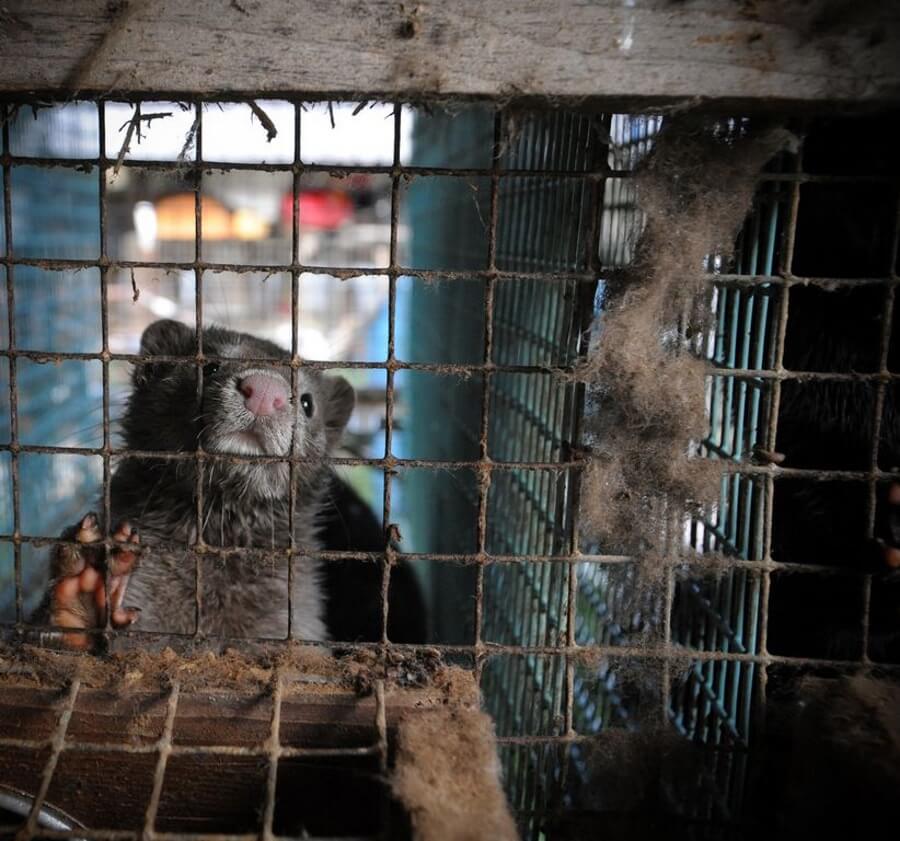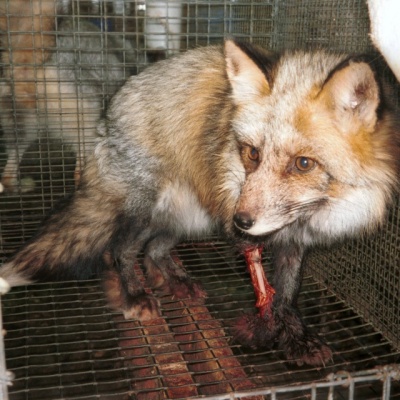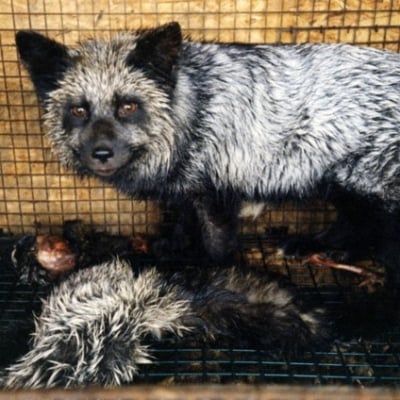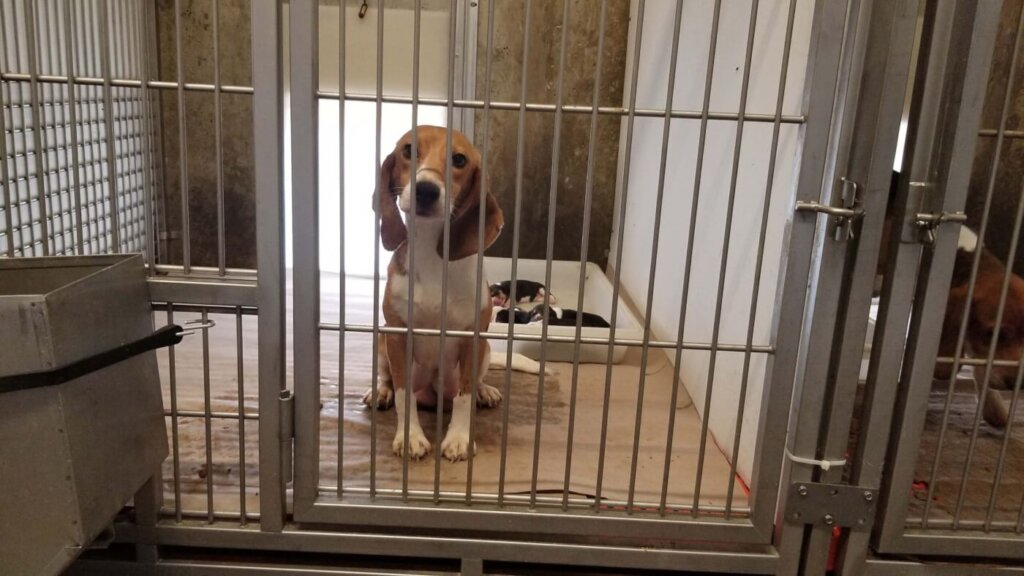
Farmed Or Trapped – Animals Used For Fur Suffer
Whether it came from an animal on a fur farm or one who was trapped in the wild, every fur coat, trinket and bit of trim caused an animal tremendous suffering – and took away a life.
Animals on fur farms spend their entire lives confined to cramped, filthy wire cages. Fur farmers use the cheapest and cruellest killing methods available, including suffocation, electrocution, gassing and poisoning.


Much of the world’s fur comes from China, where millions of dogs and cats are bludgeoned, hanged, bled to death and often skinned alive for their fur. Chinese fur is often deliberately mislabelled, so if you wear any fur, there’s no way of knowing for sure whose skin you’re in.
Animals who are trapped in the wild can suffer for days from blood loss, shock, dehydration, frostbite, gangrene and attacks by predators. In some countries, they may be caught in steel-jaw traps that slam down on their legs, often cutting to the bone; Conibear traps, which crush their necks leading to slow asphyxiation; or water-set traps, which leave beavers, muskrats and other animals struggling for more than nine agonising minutes before drowning.
During the annual Canadian seal slaughter, tens of thousands of baby harp seals are shot or repeatedly bludgeoned with clubs tipped with metal hooks. Also in Canada, hundreds of black bears are shot at point-blank range or caught in traps and left to suffer for days so that their skins can be used to make the ceremonial hats worn by Queen Elizabeth II’s five Guards Regiments.
Furs are loaded with chemicals to keep them from decomposing in the buyer’s closet, so fur production pollutes the environment and gobbles up precious resources. Producing a fur coat from ranch-raised animals takes more than 15 times as much energy as is needed to produce a luxurious faux-fur coat.
Fortunately, there is no need to be cruel to stay warm and look cool. Faux furs are available in stores everywhere, and PETA continues to work with leading designers and clothing retailers to encourage them to use and sell fashions made exclusively from animal-friendly materials.
Animals Used for Clothing:
Wool | Leather | Down | Angora | Silk
Animals Are Suffering in Laboratories – Help Save Them Now


